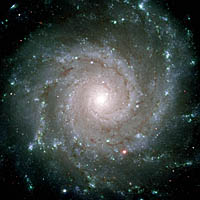Where to see stars
Use the map below to discover the network of Dark Sky Discovery Sites and other stargazing places which may host events.
Do you want to nominate the best stargazing place where you live as a Dark Sky Discovery Site? Find out how at the bottom of the page.
Click the data layers icon ![]() to expand the selection of location types on the map.
to expand the selection of location types on the map.
Dark Sky Discovery Sites are places that:
- are away from the worst of any local light pollution
- provide good sightlines of the sky
- have good public access, including firm ground for wheelchairs. The sites are generally freely accessible at all times - please check the links for any special access arrangements.
There are two darkness ratings, "Orion" and "Milky Way". "Orion" class sites are marked with a black star. "Milky Way" class sites are marked with a gold star.
At "Orion" class sites, the seven main stars in the winter constellation Orion are visible to the naked eye. Typically, this means away from, or shielded from, bright lights such as street lights, security lights or approaching car lights. "Milky Way" class sites are sites where the Milky Way is visible to the naked eye. They are much darker sites found only in more rural areas.
Some Dark Sky Discovery Sites do run events, therefore some of the markers you see in the map have the addition of a blue background if they run events at the site. There are other sites around the UK that are not Dark Sky Discovery Sites but do run public stargazing events such as observatories. These sites have only a blue background with no star on the marker.
Dark Sky Places are internationally recognised and are much larger areas of land that have been been awarded special status due to the quality of their dark skies. These sites use a green coloured marker.
| Marker | Type of Site |
|---|---|
| "Orion" Class Site. At these sites, the seven main stars in the winter constellation Orion are visible to the naked eye. Typically, this means away from, or shielded from, bright lights such as street lights, security lights or approaching car lights. | |
| "Milky Way" Class Site. At these sites the Milky Way is visible to the naked eye. They are much darker sites found only in more rural areas. | |
| "Orion" class site that runs events. The site may run events on a regular or semi-regular basis. | |
| "Milky Way" class site that runs events. The site may run events on a regular or semi-regular basis. | |
| Other Associated Site. Other sites around the UK that run regular stargazing events for the public, for example Observatories. These places may not be Dark Sky Discovery Sites. | |
| Dark Sky Places or Reserve. Internationally recognised Dark Sky Places are much larger areas of land that have been been awarded special status due to the quality of their dark skies. |
Have a look at our night sky pages for more about Orion, the Milky Way and other things to see. Other tips for visiting the sites are:
- Visit with a group of people – it’s safer and more fun!
- Check the website for the Site (via the links above) for the latest access information.
- Follow the countryside code for England, Wales, Scotland or Northern Ireland
How to nominate a new Dark Sky Discovery Site
For full details of Dark Sky Discovery Sites and how to nominate them, download the Dark Sky Discovery Sites Guidance notes [PDF/56KB]. Then complete and email us your nomination form. [DOC/37KB]Please use one nomination form per site. If you have any questions about nominating a site, please contact us at info@darkskydiscovery.org.uk.
